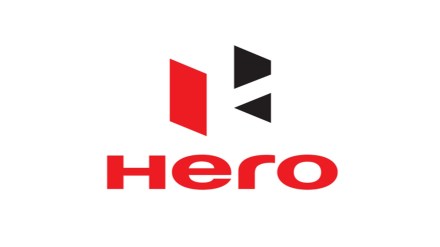Hero MotoCorp’s reign as the country’s biggest manufacturer of two-wheelers may soon come to an end. Over the past decade, the company has seen its market share shrink from 40% to 29%. Now, Honda Motorcycle and Scooter India (HMSI), with a share of 27%, trails Hero by just a few hundred thousand units.
The cause for Hero’s descent is its slow entry into the high-margin scooter and electric segments. At a time when the industry reported a 23% rise in units sold between FY15 and FY25 to nearly 20 million units, Hero’s sales fell 13% to 5.6 million.
Indeed, Hero’s reluctance to take its eye off the sub-110 cc category and focus on premium opportunities is surprising, especially since this segment has been losing share. As Rajat Mahajan, partner and automotive sector leader, Deloitte India, points out, the price-sensitive commuter segment or the 90-110 cc segment accounted for 67% of the market in 2014, but that’s now down to 47-48%.
But Hero continued to derive nearly 80% of its 5.6 million unit sales from this segment; excluding scooters, the share was slightly higher at 85%. In the current year too, Hero is looking to outpace the industry’s 6-7% growth in FY26 by focusing on the entry-level segment whereas experts believe it should be exploring the potential in high-growth areas like premium bikes, scooters, and electric two-wheelers.
The company did team up with the iconic Harley Davidson in a bid to up its game. But Hero sold just 125,000 units in the above-125cc category in FY25 and close to 100,000 units in the 125cc-150cc range. It has ceded ground to Bajaj’s Pulsar, KTM and TVS’ Apache, which dominate the space.
During an investor call, acting CEO Vikram Kasbekar said the company is gaining traction in the 125cc and above category. He noted that the Xtreme 125 is receiving a good response, while the newly launched scooters — Xoom 125 in the sporty 125cc segment and Destini 125 Xtec in the commuter category — have been well received. In the premium segment, the Xpulse 210 and Xtreme 250R have also seen a positive market response.
Ashutosh Varma, chief business officer, Hero MotoCorp, also said the company is looking at more product launches in the 125cc category “as per market need” and has “an exciting product lineup planned for the future”.
Hero’s offerings — Hunk, Xtreme, Xpulse 200, Karizma, Harley-Davidson X440, and Mavrick 440 — have failed to gain traction. “Despite partnering with Harley-Davidson, Hero hasn’t carved out a distinct premium identity for itself,” said an auto expert. Even with Harley-Davidson, Hero’s premium portfolio — including Nightster, Pan America, Sportster S, Fat Bob, Fat Boy, Heritage Classic, Road Glide, Road King, and Street series — caters to a niche that comprises just 1% of the overall two-wheeler market.
They believe Hero cannot rely on Harley’s brand power alone to succeed in a price-sensitive market. “Harley will never be a common man’s ambition. The common man rather the youth looks for the macho look and multiple features that a product can offer. Hero needs a product built on its own DNA—something that can effectively fill the 150cc to 250cc gap, which is currently witnessing strong growth,” he said.
The management’s plans to launch two more affordable EVs by September and some traction in the newly unveiled Xoom 160 scooter may help boost sales. Industry executives say that the company should focus more on seizing the opportunity in the premium bikes, scooter and e2Ws.
“The premiumisation in motorcycles is increasing along with an uptick in share of the higher cc segment. In addition, scooters have stayed strong and the EV segment, which too is primarily scooters, has made big strides. Players that are strong in these segments would certainly see a higher growth,” Ashim Sharma, senior partner & group head at Nomura Research, said.
Hero’s all-electric sub-brand, Vida, recently launched its second electric scooter, the VX2.
Hero’s performance has been stunted by the loss of market share in the scooter segment, which fell to 6% in FY25 from 17% a decade ago. The company’s scooter volumes nearly halved—from 752,000 in FY15 to 391,000 in FY25. In FY25, Hero’s scooter sales fell by 2.3%, whereas industry sales were up by 17.4%.
As Deloitte’s Mahajan says, there has been a shift in this space to bigger scooters while the share of 90-110cc scooters, which was 90% in 2014, is now just 60%. Again, while e2W sales crossed 1 million units in FY25 – 7% of total two-wheelers – Hero managed fewer than 50,000 units compared to over 200,000 units sold each by TVS and Bajaj.
In general, two-wheeler players need to invest in product design and performance by spending on R&D, says Mahajan. “They need to also invest in bringing innovation across distribution channels to cater to aspiring customers,” he adds.
Since January, Hero has also seen the exit of several top executives, including former CEO Niranjan Gupta and chief business officer Ranjivjit Singh. The company also ran into problems with the government on some issues. But it must now up its game.
